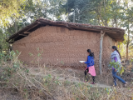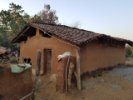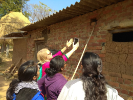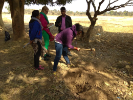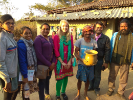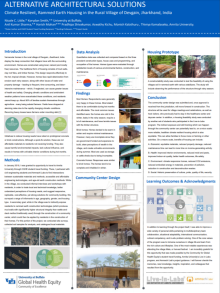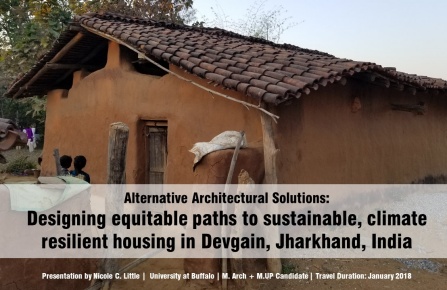Alternative Architectural Solutions for Equitable, Sustainable, and Climate Resilient Housing in Jharkhand, India
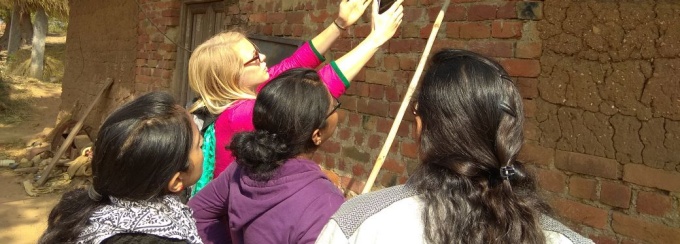
Traditional homes in the rural village of Devgain, Jharkhand, India are constructed using local, natural resources which are extracted at no cost to families. This is critical, for the majority of families are engaged in subsistence farming. This form of housing, which is constructed with mud walls, responds effectively to the hot, temperate climate in regards to indoor environment. However, these homes face issues of water penetration and erosion which lead to frequent, time-consuming, and labor intensive maintenance which can cause greater issues if neglected.
Typical government and NGO interventions that address housing needs rely on prototypical concrete constructions. Although a short-term solution, concrete is inequitable in cost, has negative environmental impacts, lacks cultural influence, and produces uncomfortable interior conditions, especially in areas with extreme temperature ranges.
Nicole, a dual-degree graduate student in Architecture and Urban and Regional Planning, collaborated with civil engineering students from Amrita University who work on sustainable and affordable construction methods that utilize local materials and engineering technologies with age-old earth construction methods. Their research group designs rammed earth and studies the utilization of recycled plastic for increased durability – a project at the intersection of health and the built environment, equity, and ecological sustainability.
While in the village, their team intended to understand housing needs and suggest responsive, replicable, cost-effective, yet strong solutions for small community building needs by:
- Documenting household building methods and construction techniques,
- understanding community needs,
- identifying the need for new buildings (houses, community center, sanitation facilities, etc.),
- identifying the available local and natural materials which can be used in construction, and
- collecting soil samples, if possible, for testing purposes.
Alternative Architectural Solutions strives to identify and innovate sustainable and appropriate building solutions by incorporating architectural design and engineering technology. This project brings solutions to age-old methods in order to empower and improve the livelihood of people in rural communities of India.
Written by Jessica Scates
- Student(s):
Nicole Little (Architecture and Urban and Regional Planning) - Faculty Mentor:
Korydon Smith (Architecture) - Country of Travel:
India - Dates of Travel:
December 2017-January 2018
Project Updates
Amrita University’s Live-In-Labs are 101 villages in rural India, where Student Researchers live, assess the local community’s challenges, and apply their educational training in the creation and testing of potential solutions. The central aim of Live-In-Labs is to find ways to integrate education into day-to-day life, and in so doing, to foster strategic planning (rather than mere survival) in rural communities. To that end, students work in interdisciplinary teams to apply and implement theoretical knowledge.



